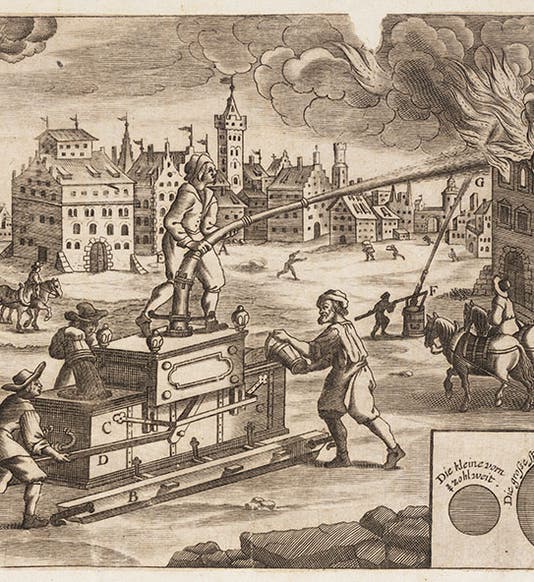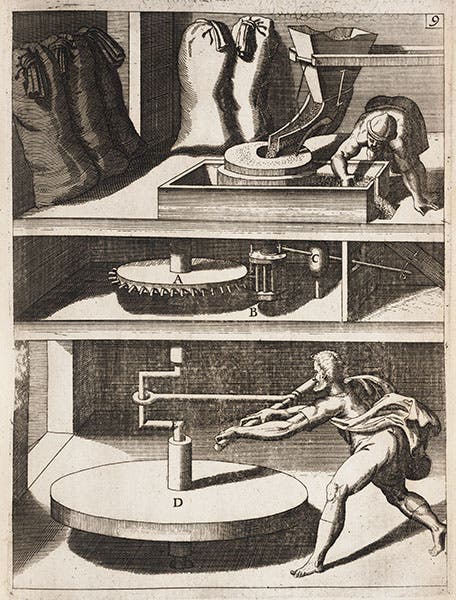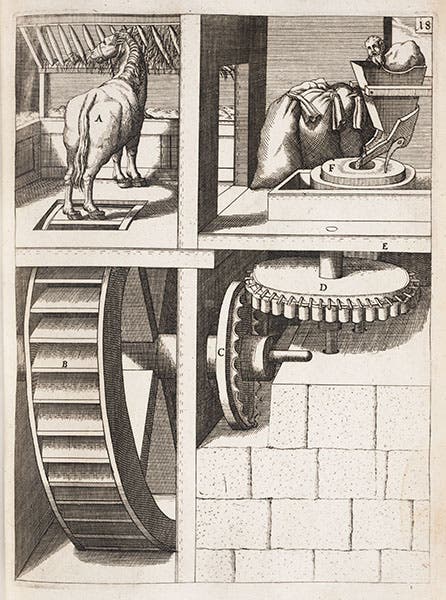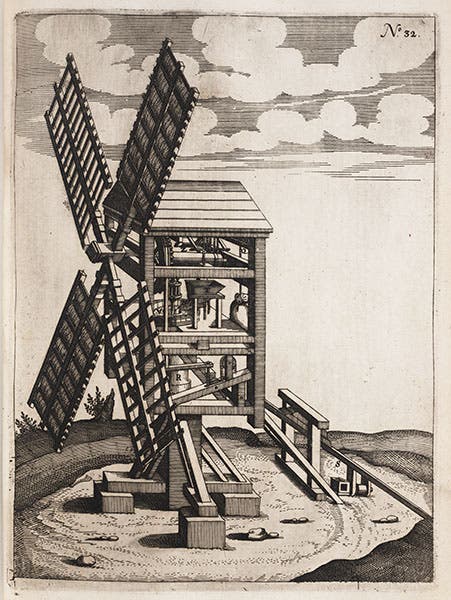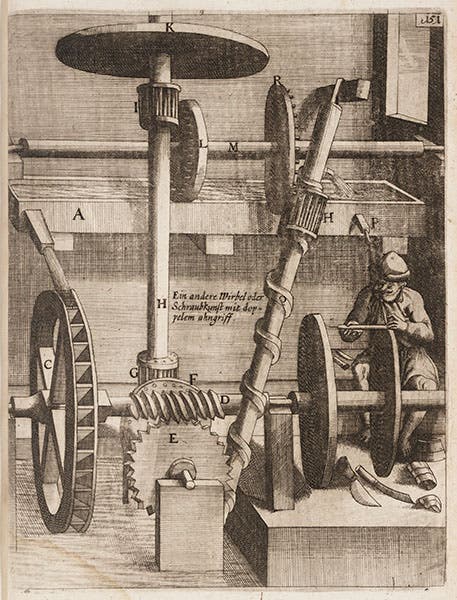Scientist of the Day - Georg Andreas Böckler
Georg Andreas Böckler, a German engineer and garden architect, died Feb. 21, 1687, at about the age of 70; the year and date of his birth are unknown. Indeed, most of the details of Böckler's life are unknown. We know only that he lived in Nuremberg, designed waterworks for gardens, and wrote quite a number of books, of which two are noteworthy: Architectura curiosa nova (1664, a Latin translation of a German edition that was published the previous year), and Theatrum machinarum novum (1662, also a translation from an earlier German edition). We have both these works, in the Latin editions, in our collections. Since most short treatments of Böckler discuss the Architectura nova, a book about fountains for gardens, we will discuss here his machine book, the Theatrum.
The Theatrum is a collection of 154 designs for machines to provide power, mostly for grain mills, sometimes for pumps. Böckler starts out with simple human powered machines, where a man turns a crank or a windlass, connected by a variety of gears and screws to a grindstone. We show a sample in our second image.
Having exhausted the poor humans, Böckler turns to horse-powered machinery, of which the most charming is depicted in our third image, where a horse is somehow persuaded by a food trough to drive a large wheel with his hind legs. Then there is brief section that shows windmill-powered devices – only two, surprisingly, of which we show one (fourth image).
Most of the rest of the devices are water powered. Many are legitimate, but some of the latter machines are really perpetual motion machines, where an Archimedean screw raises water, which falls, powers the mill, and also drives the screw (fifth image). A very economical machine indeed, should it work, but unfortunately, it would not. Like most machine books of the time – and there were many – the devices pictured were paper machines only, and we have no evidence that any were ever turned into real wood and metal structures.
The last engraving in the Theatrum – and our first – is everyone's favorite – placed last perhaps because it does not fit at all into the theme of the book. It is a fire engine, in action. We hope this one was actually built.
Dr. William B. Ashworth, Jr., Consultant for the History of Science, Linda Hall Library and Associate Professor, Department of History, University of Missouri-Kansas City. Comments or corrections are welcome; please direct to ashworthw@umkc.edu.

